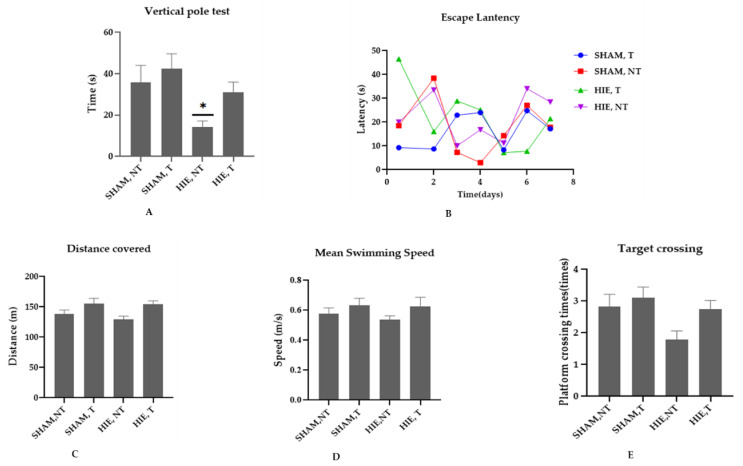Figure 1.
Effect of swimming on motor and cognitive performance. (A) Vertical pole test; exercise training animals (SHAM, T and HIE, T) spent longer time on the vertical pole than sedentary animals (SHAM, NT and HIE, NT), with HIE, NT showing a statistically significant decrease; findings are expressed as Mean ± SEM, * p < 0.05 (one-way ANOVA followed by Dunnett’s post-test). (B) Escape latency; swimming exercise enhanced learning and memory; exercising animals showed a significantly reduced escape latency, or the time (seconds) required to escape. (C) Distance covered; in the exercising groups, there was an obvious increase in distance covered, but it was not statistically significant at p < 0.05 (one-way ANOVA followed by Dunnett’s post-test). (D) Mean swimming speed; animal groups that were subjected to exercise showed a higher swimming speed compared to the sedentary groups indicating that their motor behavior was positively influenced by exercise. (E) Target crossing; this shows the number of times the animals crossed the site at which the platform had been positioned which as expected improved with exercise. The results are expressed as Mean ± SEM. The number of animals used in each group is 7, but the difference was not statistically significant at p < 0.05 (one-way ANOVA followed by Dunnett’s post-test).

